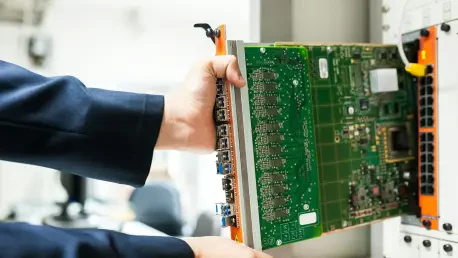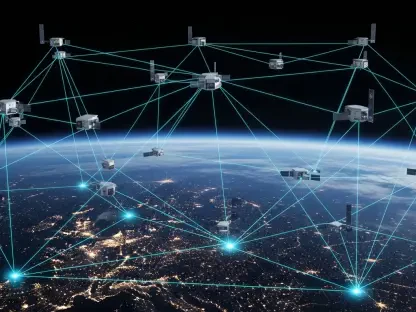What does it take to fuel the insatiable hunger of artificial intelligence in today’s tech-driven world, and how is one company stepping up to meet this challenge? Picture a sprawling campus in the quiet Midwest, humming with the power to process billions of calculations per second, driving innovations from healthcare to autonomous vehicles. Applied Digital, a key player in digital infrastructure, has just clinched a staggering $5 billion lease deal for its Polaris Forge 2 Campus in Harwood, North Dakota. This landmark agreement with an undisclosed U.S.-based hyperscaler marks a bold step in reshaping how and where AI’s backbone is built, pulling attention to an unlikely corner of America.
This deal isn’t just about a contract; it’s a signal of a seismic shift in the tech landscape. As AI continues to redefine industries, the demand for robust, scalable data centers has skyrocketed, placing immense pressure on infrastructure providers to innovate. With this 15-year, 200-megawatt lease, Applied Digital is not only meeting that demand but also reimagining the geography of tech hubs. The story of this expansion offers a glimpse into the high-stakes race to power the intelligence era, right from the heartland of the United States.
Why AI’s Infrastructure Crisis Demands Attention
The explosion of artificial intelligence has created a critical bottleneck: the infrastructure to support it. With AI workloads projected to grow exponentially—some estimates suggest a 50% annual increase in data center demand through the next decade—traditional facilities are buckling under the strain. The need for energy-efficient, high-capacity centers has never been more urgent, as industries from finance to logistics lean heavily on AI for transformation.
North Dakota, often overlooked in tech conversations, emerges as a strategic solution in this crisis. Its cooler climate reduces cooling costs, and vast land availability allows for expansive projects like Polaris Forge 2. Applied Digital’s move to anchor AI infrastructure in such regions highlights a broader trend: the decentralization of tech hubs to meet both economic and environmental goals. This shift challenges the Silicon Valley-centric view of innovation, proving that the future of computing power can thrive far beyond coastal cities.
Unpacking the Polaris Forge 2 Powerhouse
At the core of this $5 billion deal lies the Polaris Forge 2 Campus, a 900-acre marvel engineered for the demands of AI and high-performance computing. The initial phase, set to launch in 2026 and reach full capacity by 2027, includes two buildings delivering 200 megawatts of critical IT load. What’s more, the hyperscaler holds a first right of refusal for an additional 800 megawatts, potentially scaling the campus to a full 1 gigawatt—a staggering feat in data center design.
Efficiency is the name of the game here. Boasting a projected Power Usage Effectiveness (PUE) of 1.18, among the lowest in the industry, and minimal water usage, the campus sets a new standard for sustainable tech infrastructure. Applied Digital’s “Different by Design” philosophy drives this project, emphasizing power density and liquid cooling to handle intense AI workloads while prioritizing climate-friendly development. This campus isn’t just a facility; it’s a blueprint for the future of digital expansion in underutilized regions.
Leadership and Vision Behind the Deal
Wes Cummins, Chairman and CEO of Applied Digital, captures the essence of this milestone with a clear perspective. “This isn’t just about constructing data centers; it’s about redefining the very fabric of hyperscale infrastructure—where it’s built and how quickly it comes online,” he stated. His emphasis on execution speed, outpacing industry norms in design and deployment, underscores why this deal stands out in a crowded field.
This agreement builds on a string of successes for the company, including a 150-megawatt lease at Polaris Forge 1 with CoreWeave and a $5 billion partnership with Macquarie Asset Management for AI infrastructure. Recognized as a top performer in the Dallas Business Journal’s Fast 50 list, Applied Digital’s trajectory reflects a bold vision. Cummins describes these campuses as “AI factories,” a term that encapsulates their role in powering the intelligence era while fostering responsible growth in America’s heartland.
Speed and Sustainability as Game Changers
In an era where AI demand outstrips supply, Applied Digital’s strategy offers a compelling model for scaling infrastructure. The company’s focus on rapid execution ensures that hyperscalers can deploy solutions without delay, a critical edge as businesses race to integrate AI. This agility, paired with partnerships that prioritize scale, positions the Polaris Forge 2 project as a cornerstone of technological advancement.
Sustainability also plays a pivotal role in this narrative. By leveraging liquid cooling and achieving low PUE ratings, the campus minimizes its environmental footprint—a priority as data centers face scrutiny for energy consumption. Additionally, locating in regions like North Dakota taps into local advantages, such as lower operational costs and community support, proving that innovation doesn’t need to compromise on responsibility. This balance of speed and eco-consciousness sets a precedent for others in the industry to follow.
A Legacy of Innovation and What Lies Ahead
Looking back, Applied Digital’s $5 billion lease for Polaris Forge 2 stood as a defining moment in the evolution of AI infrastructure. It showcased how strategic location choices and cutting-edge design could address the pressing needs of a tech-hungry world. The company’s ability to execute at unprecedented speed while maintaining a commitment to sustainability carved out a lasting impact on the digital landscape.
For businesses and policymakers, the path forward became clear: invest in scalable partnerships with hyperscalers to meet soaring demand. Prioritizing advanced cooling technologies and exploring non-traditional regions for development emerged as vital steps to balance growth with environmental stewardship. As the intelligence era continued to unfold, the lessons from this deal pointed toward a future where innovation and responsibility walked hand in hand, ensuring that the power behind AI remained both accessible and sustainable.









